Nestled in the vibrant heart of North Africa, Morocco beckons with its exotic charm, a tapestry woven from ancient traditions, stunning landscapes, and warm hospitality. From the bustling medinas of Marrakech to the serene dunes of the Sahara Desert, Morocco is a land of captivating contrasts that has been enticing travelers for centuries. In this comprehensive guide, we’ll embark on a journey through the diverse facets of Morocco travel, offering insights into its culture, attractions, cuisine, and practical tips to ensure an unforgettable adventure.
From the endless expanse of the Sahara Desert to the labyrinthine medinas, the kingdom of Morocco enchants travelers with its unique blend of tradition and modernity. Situated at the crossroads of Africa and Europe, this North African gem boasts a rich tapestry of history, culture, and landscapes that beckon explorers from around the world.
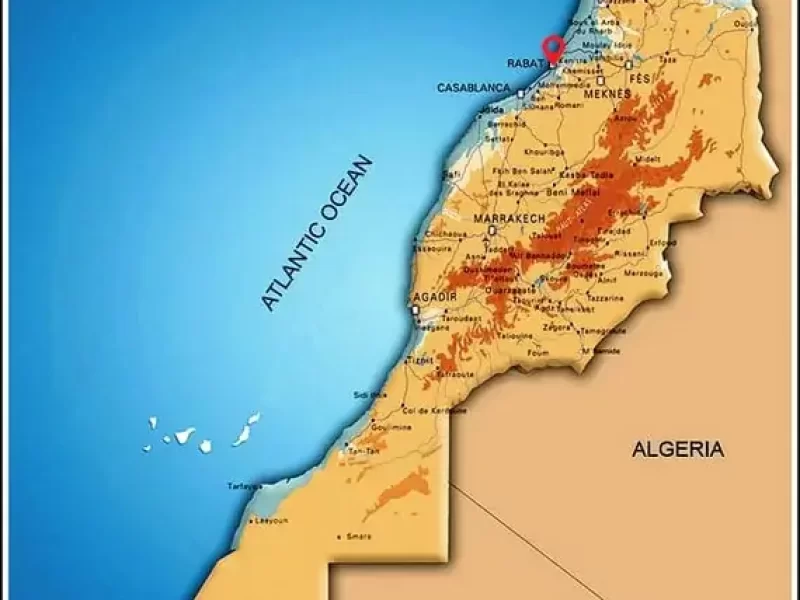
Morocco’s Geographical Diversity
Morocco’s geography is a feast for the senses. The vastness of the Sahara Desert stretches across the southeast, a sea of golden dunes that captivate with their shifting shapes under the sun. The Atlas Mountains, with their snow-capped peaks, cut through the heart of the country, offering opportunities for hiking, trekking, and exploring Berber villages. To the west lies the Atlantic coastline, home to charming towns, bustling ports, and some of the best surfing spots in the world.
Cultural Tapestry of Morocco
Morocco’s cultural landscape is a testament to its rich history. The country’s unique blend of Arab, Berber, and European influences is reflected in its architecture, cuisine, and way of life. Traditional riads (guesthouses) are adorned with intricate mosaics, and the call to prayer echoes through the air as a reminder of Morocco’s Islamic heritage. With French and Spanish colonial history also in the mix, Morocco’s cities offer a vibrant fusion of old and new.
Historical Significance
Morocco’s history is etched in its cities, landmarks, and monuments. The city of Fes, for instance, boasts the University of Al Quaraouiyine, considered the oldest continuously operating educational institution in the world. The medina of Marrakech, a UNESCO World Heritage site, is a testament to the city’s historical significance as a major trading hub along ancient caravan routes. As you explore Morocco, you’ll uncover layers of history that contribute to its multifaceted identity.
Planning Your Trip
Going on a Morocco tour requires thoughtful planning to make the most of your experience. Whether you’re drawn to the bustling markets, the tranquil desert, or the vibrant cities, here are some essential factors to consider before you travel to Morocco.
Best Time to Visit Morocco
Choosing the right time to visit Morocco can greatly enhance your experience. Spring (March to May) and fall (September to November) are generally considered the best seasons to explore the country. The weather during these periods is mild and pleasant, making it ideal for outdoor activities, sightseeing, and cultural exploration. Summer (June to August) can be scorching, especially in the desert regions, while winter (December to February) offers milder temperatures but limited activities.
Visa Requirements
Do I need a visa to Morocco? this is one of the first questions every single traveler asks before traveling. Morocco offers visa-free entry to citizens of many countries, allowing stays of up to 90 days. Some nationalities can obtain visas upon arrival, while others may need to apply in advance through the Moroccan embassy or consulate in their home country. It’s crucial to research the specific visa requirements based on your nationality and the purpose of your visit. Ensure your passport has sufficient validity for the duration of your stay.
Health and Safety Considerations
While Morocco is generally safe for travelers, it’s advisable to take certain health precautions. Make sure you’re up to date on routine vaccinations and consider additional vaccinations such as Hepatitis A and Typhoid. It’s also wise to carry a basic medical kit with essentials like pain relievers, antidiarrheal medication, and any prescription medications you may need. As with any travel destination, be cautious with street food and ensure you drink bottled or purified water.
Currency and Money Matters
The official currency of Morocco is the Moroccan Dirham (MAD). While credit cards are widely accepted in major cities and tourist areas, it’s advisable to carry some cash, especially when visiting smaller towns or rural areas. Currency exchange facilities are available at airports, banks, and currency exchange offices. ATMs are also readily available in urban centers.
Communication and Internet
Staying connected while traveling in Morocco is essential for navigation and communication. Many hotels and cafes offer Wi-Fi access, and you can purchase local SIM cards for your phone to have access to mobile data. However, keep in mind that coverage may be limited in more remote areas.
Exploring Moroccan Cities
Each city in Morocco offers a unique blend of history, architecture, and culture. Whether you’re drawn to the bustling markets, historical landmarks, or modern infrastructure, Morocco’s cities have something to offer every type of traveler.
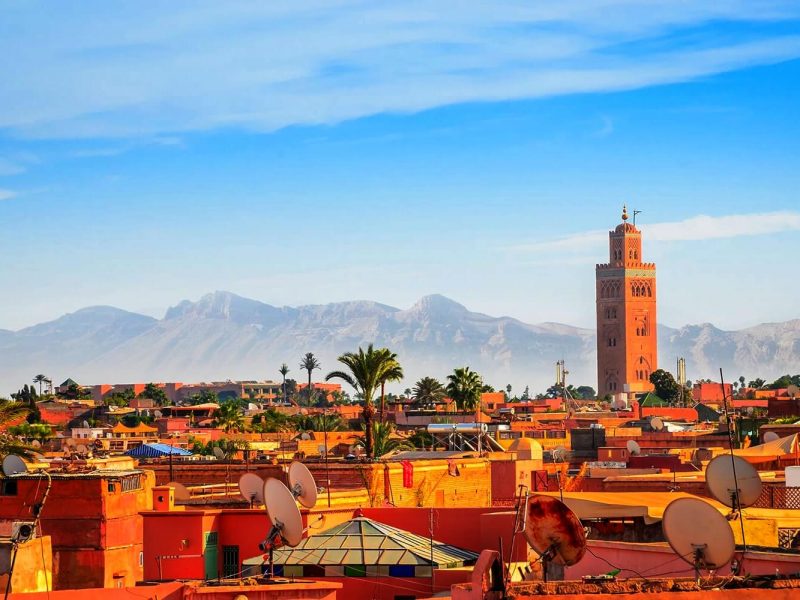
Marrakech: Jewel of the South
Marrakech, often called the “Red city,” is a sensory delight that captures the essence of Morocco. The medina’s labyrinthine alleys are a treasure trove of souks (markets), where you can shop for spices, textiles, ceramics, and more. The iconic Jemaa el-Fnaa square comes alive at sunset, with street performers, food stalls, and storytellers. Don’t miss the opportunity to explore the magnificent Bahia Palace, the Koutoubia Mosque, and the Saadian Tombs.
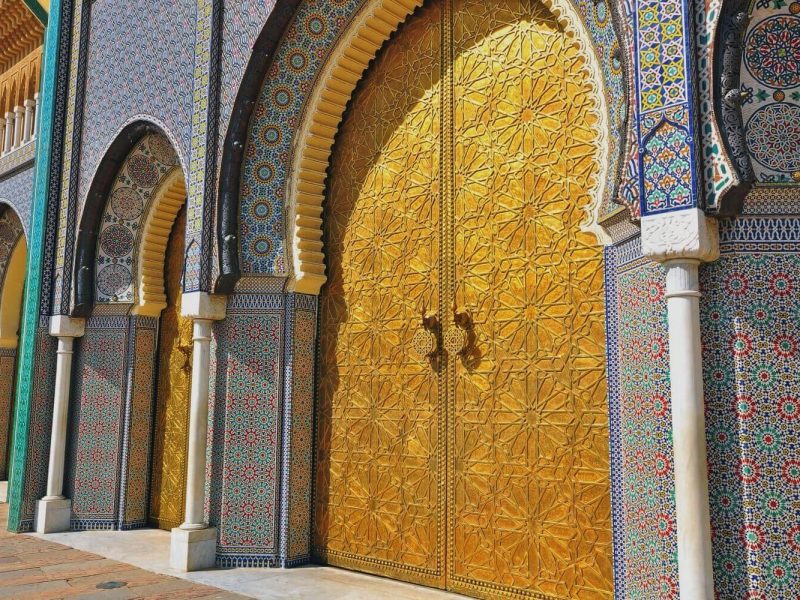
Fes: The Oldest Imperial City
Fes is a historical gem, known for its well-preserved medieval architecture and as a center of Moroccan culture and learning. The medina of Fes el-Bali is a UNESCO World Heritage site and offers a glimpse into the past with its narrow streets, bustling markets, and stunning architecture. Visit the University of Al Quaraouiyine, which dates back to the 9th century, and explore the tanneries that produce some of Morocco’s finest leather goods.
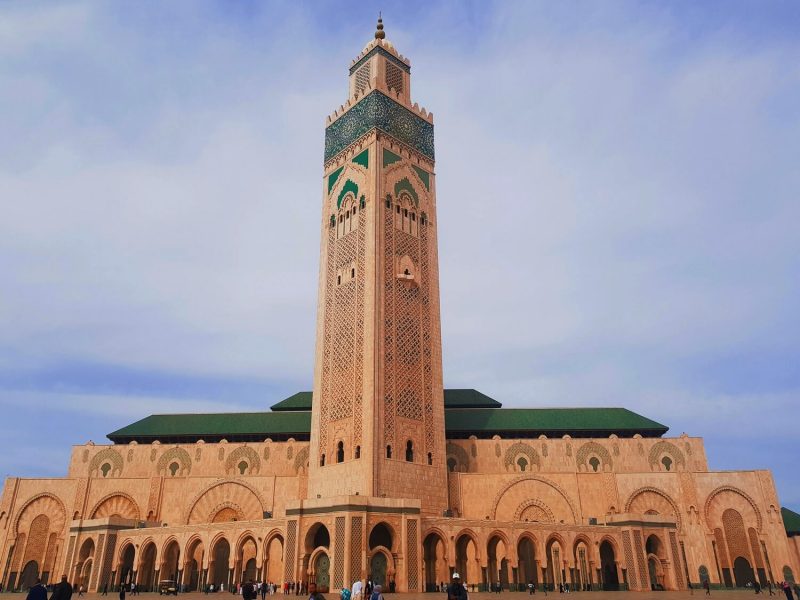
Casablanca: Modern Metropolis
As Morocco’s largest city and economic hub, Casablanca offers a modern contrast to the country’s traditional allure. The Hassan II Mosque, one of the world’s largest mosques, is a standout architectural marvel, with intricate designs and stunning ocean views. The city’s European influence is evident in its architecture, and the bustling Corniche is a popular area for strolling and dining by the sea.
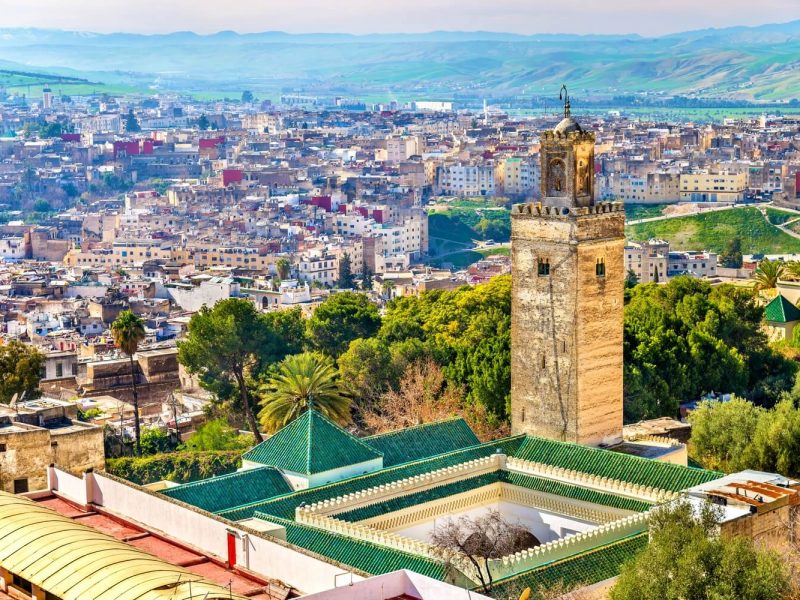
Tangier: Gateway to Africa
Located at the crossroads of Africa and Europe, Tangier has long been a gateway for travelers and artists seeking inspiration. The medina is a maze of narrow alleys, while the Kasbah offers panoramic views of the Strait of Gibraltar. The American Legation Museum, once the residence of American diplomats, offers insights into Tangier‘s history and cultural connections.
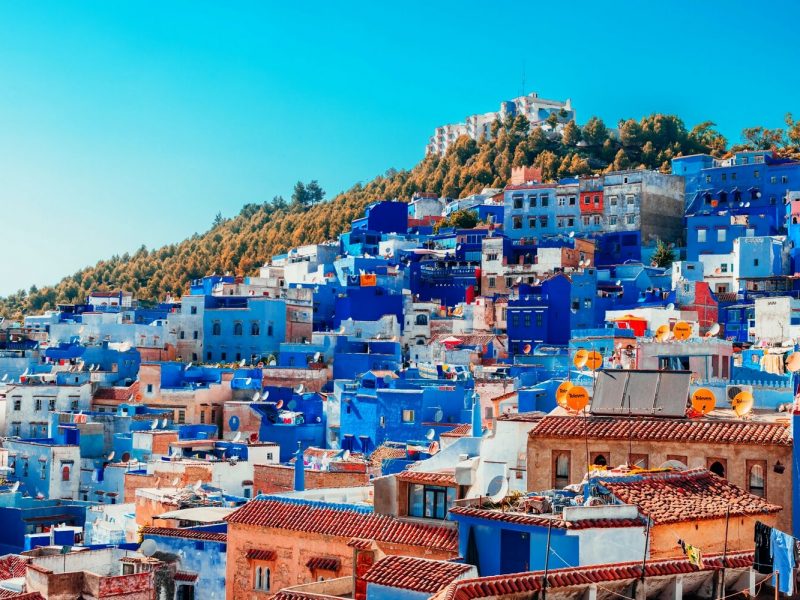
Chefchaouen: The Blue City
Perched amidst the Rif Mountains, Chefchaouen is known for its distinctive blue-painted buildings that create an ethereal ambiance. This artistic haven offers a serene escape from the hustle and bustle of urban life. Explore the charming medina, hike to the Spanish Mosque for panoramic views, and immerse yourself in the bohemian atmosphere that defines the city. The blue city of Chefchaouen can be reached from Tangier, Casablanca, or Rabat, but the most common is a day trip from Fes to Chefchaouen as 70% of travelers who want to visit Chefchaouen and the north, fly to Fes.
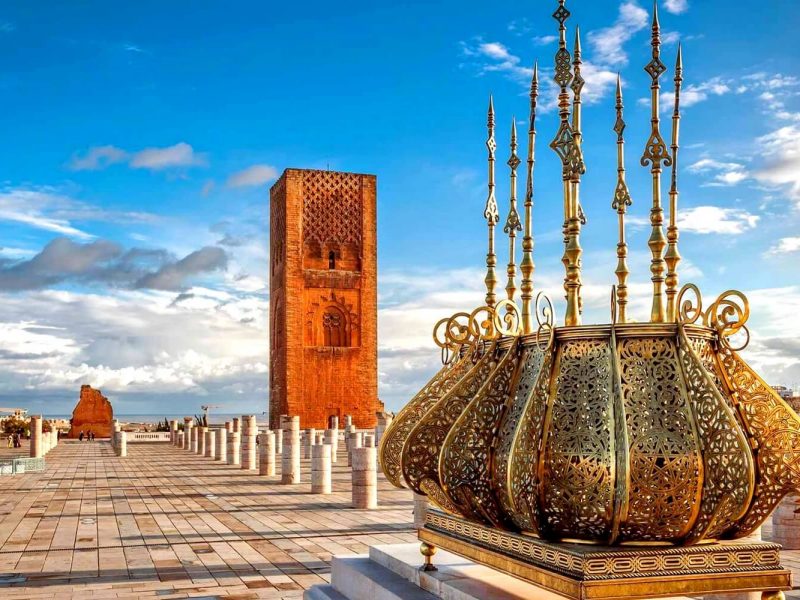
Rabat: Capital of Morocco
Rabat, the political and administrative capital of Morocco, exudes a sense of modernity while preserving its historical heritage. The Royal Palace and the Chellah Necropolis showcase the city’s historical significance, while the modern Bou Regreg riverfront offers a picturesque setting for a leisurely stroll. Visit the Mohammed VI Museum of Modern and Contemporary Art to explore Morocco’s vibrant art scene.
Iconic Attractions
Morocco’s attractions are as diverse as its landscapes. From historical landmarks to natural wonders, these iconic sites are must-visit destinations that showcase the country’s unique beauty and cultural heritage.
**Majestic Medina of Marrakech**
The heart of Marrakech lies within its medina, a UNESCO World Heritage site that encapsulates the essence of Morocco’s culture and history. As you navigate its labyrinthine alleys, you’ll encounter a kaleidoscope of sights, sounds, and scents. The vibrant souks offer everything from spices to textiles, and the city’s historical landmarks, such as the Koutoubia Mosque and the Saadian Tombs, provide glimpses into Marrakech’s rich past.
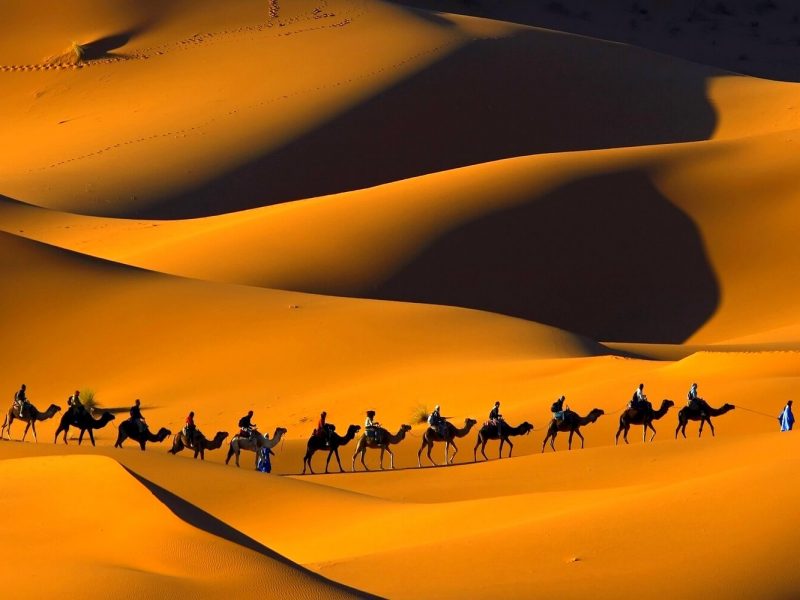
**The Sahara Desert: A Golden Odyssey**
The Sahara Desert is an otherworldly landscape that captivates the imagination. The towering sand dunes of Merzouga (Erg Chebbi) and Erg Chigaga seem to stretch infinitely, offering a surreal and breathtaking backdrop for adventure. Embark on a camel trek into the desert, where you’ll witness the mesmerizing play of light and shadow during sunrise and sunset. Spend the night in a traditional desert camp, gazing at the starlit sky and experiencing the tranquility of the desert.
**Atlas Mountains: Trekking Wonderland**
The Atlas Mountains are a playground for outdoor enthusiasts, offering a range of activities from gentle hikes to challenging treks. The High Atlas and Middle Atlas regions are home to picturesque valleys, lush oases, and traditional Berber villages. The Toubkal National Park is a popular destination for trekking, culminating in the ascent of Mount Toubkal, North Africa’s highest peak.
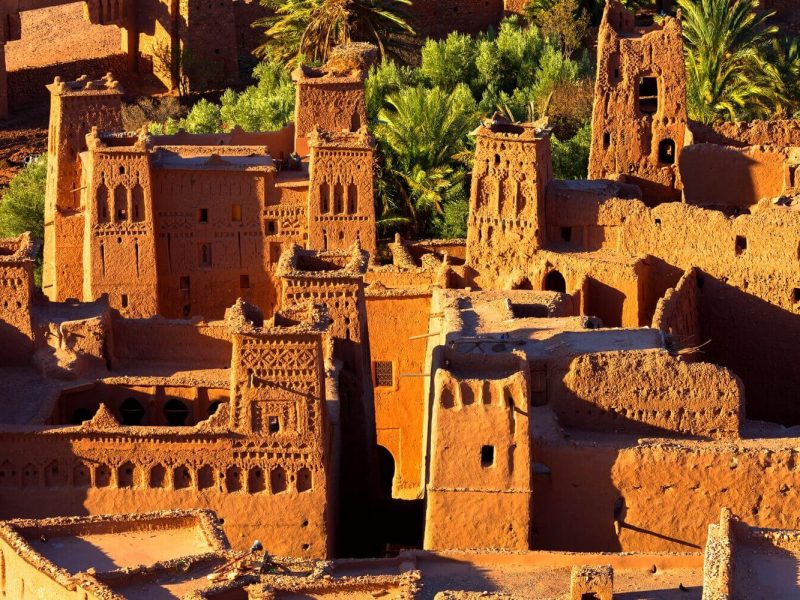
**Ait Benhaddou: Desert Citadel**
Kasbah Ait Benhaddou is a UNESCO-listed kasbah that showcases Morocco’s architectural heritage. This fortified city, located along ancient caravan routes, boasts intricate earthen architecture that has stood the test of time. Recognizable from its appearances in numerous films and TV shows, including “Game of Thrones,” Ait Benhaddou offers a glimpse into the history and culture of the region.
**Volubilis: Ancient Roman Ruins**
The ruins of Volubilis provide a window into Morocco’s ancient history. This UNESCO World Heritage site was once a thriving Roman city and offers well-preserved mosaics, columns, and arches. Stroll through the remnants of ancient homes, public buildings, and temples, and imagine life during the Roman period.
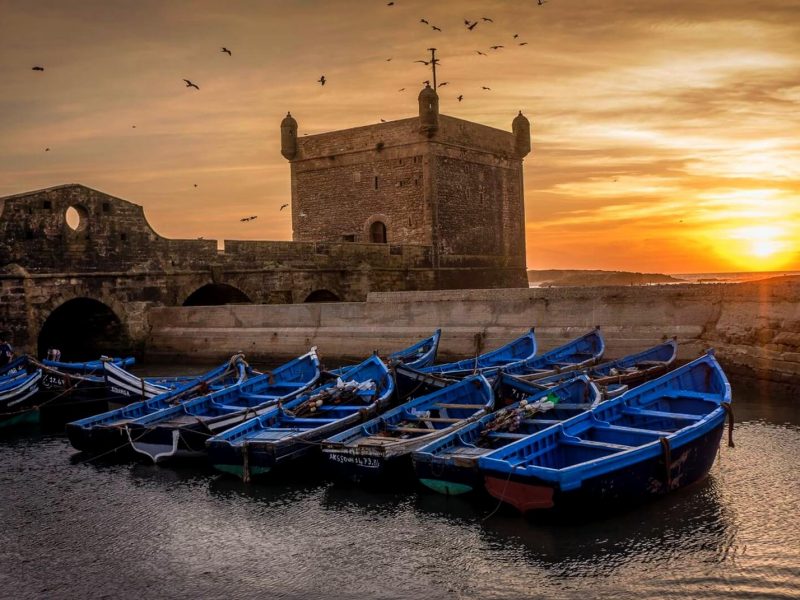
**Essaouira: Coastal Gem**
Essaouira, located along the Atlantic coastline, is a charming coastal town known for its relaxed atmosphere and historic medina. The town’s blue-and-white color palette creates a picturesque backdrop against the backdrop of the sea. Explore the medina’s narrow streets, visit the Skala de la Ville with its seafront cannons, and enjoy fresh seafood from the bustling fish market.
Cultural Encounters
Immersing yourself in Moroccan culture is an integral part of the travel experience. From the architecture that adorns the cities to the flavors that tantalize the taste buds, Morocco’s culture is a symphony of sensory delights.
**Moroccan Architecture and Design**
Morocco’s architecture is a blend of intricate designs and vibrant colors, reflecting a rich history of diverse influences. In the medinas, you’ll find elaborate mosaics, geometric patterns, and carved woodwork that adorn homes, palaces, and religious buildings. Traditional riads are a testament to Moroccan craftsmanship, with lush courtyards and ornate details that provide an oasis of tranquility.
**Traditional Moroccan Music and Dance**
Music is deeply ingrained in Moroccan culture, with a wide range of genres that reflect the country’s diverse influences. From the rhythmic beats of Gnawa music to the melodic strains of Andalusian classical music, Morocco’s musical landscape is a tapestry of sounds. Attending a live music performance or watching traditional dance, such as the spirited performance of the belly dance, is an opportunity to witness the country’s artistic expressions.
**Moroccan Cuisine: A Gastronomic Adventure**
Moroccan cuisine is a sensory feast that tantalizes taste buds with an array of flavors and aromas. The use of spices such as cumin, saffron, and cinnamon creates dishes that are both fragrant and flavorful. Tagine, a slow-cooked stew that takes its name from the clay pot it’s cooked in, is a staple of Moroccan cuisine. Harira and Couscous, another Moroccan favorite, is often paired with vegetables and tender meats. Don’t miss the opportunity to savor traditional Moroccan pastries, such as the flaky and sweet pastilla.
**Moroccan Handicrafts and Souks**
Exploring Morocco’s bustling souks (markets) is an experience that immerses you in a world of artisanal craftsmanship.
From intricate carpets and textiles to ceramics, leather goods, and jewelry, the souks are a treasure trove of unique finds. Each region specializes in its own craft, such as the intricate zellige tiles of Fes and the vibrant textiles of Marrakech. Engaging with artisans and learning about their techniques is an opportunity to support local communities and take home a piece of Moroccan culture.
**Hammams: The Art of Relaxation**
The hammam, a traditional Moroccan bathhouse, offers a holistic experience that rejuvenates both the body and the spirit. The ritual typically involves a series of steps, including steam rooms, exfoliation, and massages. Hammams are integral to Moroccan culture, providing a space for relaxation, socializing, and self-care. Whether you opt for a luxurious spa or a local neighborhood hammam, the experience is a soothing escape from the hustle of daily life.
**Festivals and Celebrations**
Morocco’s calendar is punctuated by a myriad of festivals and celebrations that offer insights into the country’s cultural fabric. The Fes Festival of World Sacred Music, held in Fes, brings together musicians from around the world to celebrate the spiritual power of music. The Moussem of Tan-Tan is a vibrant desert festival that celebrates nomadic traditions. During Ramadan, Morocco’s largest cities come alive with nighttime festivities and communal meals that showcase the spirit of togetherness.
Outdoor Adventures
For those seeking outdoor thrills and natural beauty, Morocco offers a wealth of opportunities to connect with its landscapes. Whether you’re trekking through the Atlas Mountains or riding a camel ride in Merzouga, adventure awaits at every turn.
**Trekking and Hiking in the Atlas Mountains**
The Atlas Mountains present a playground for trekkers and hikers of all levels. From gentle trails that wind through lush valleys to challenging ascents of snow-capped peaks, the range offers a variety of options. The Toubkal National Park, home to North Africa’s highest peak, Mount Toubkal, is a popular destination for trekking enthusiasts. Along the way, you’ll encounter Berber villages, terraced fields, and panoramic vistas that showcase Morocco’s diverse landscapes.
**Camel Trekking in the Sahara Desert**
A Morocco camel trek into the Sahara Desert is an iconic experience that transports you to a realm of enchantment. As you traverse the undulating dunes of Erg Chebbi or Erg Chigaga, you’ll witness the desert’s ever-changing colors and textures. The vastness of the Sahara, coupled with the silence that envelops the desert, creates a profound sense of solitude and wonder. Spend nights in traditional desert camps, where you’ll enjoy traditional meals and stargazing under the vast desert sky.
**Surfing on Morocco’s Coastlines**
Morocco’s Atlantic coastline is a haven for surfers, offering consistent waves and a range of breaks suitable for all skill levels. Towns such as Taghazout and Essaouira are renowned for their surf culture and surf schools that cater to beginners and experienced surfers alike. Whether you’re catching your first wave or seeking the thrill of riding barrels, Morocco’s coastlines provide a dynamic surfing experience.
**Hot Air Balloon Rides**
For a unique perspective of Morocco’s landscapes, consider taking a hot air balloon ride. Ballooning over Marrakech or the High Atlas Mountains offers breathtaking aerial views that reveal the beauty of the terrain below. As you soar above valleys, oases, and traditional Berber villages, you’ll gain a new appreciation for the diverse topography of Morocco.
Off the Beaten Path
While Morocco’s major cities and attractions are captivating, there are hidden gems and lesser-known destinations that offer a more intimate and authentic experience.
**Ouarzazate: Hollywood of Africa**
Ouarzazate, often referred to as the “Gateway to the Desert,” is a city that has earned the nickname “Hollywood of Africa.” It has served as the backdrop for numerous films and TV shows, including “Gladiator” and “Game of Thrones.” The Taourirt Kasbah, a UNESCO World Heritage site, showcases the intricate clay architecture that characterizes the region.
**Merzouga: Desert Bliss**
While many travelers opt for popular desert destinations, Merzouga offers a quieter and more serene desert experience. The Erg Chebbi dunes are a hidden treasure, where you can enjoy camel treks, stargazing, and traditional Berber hospitality. The tranquility of Merzouga’s desert landscapes provides an opportunity for reflection and connection with nature.
**Todra Gorge: Nature’s Sculpture**
Todra Gorge, located in the eastern part of the High Atlas Mountains, is a breathtaking natural wonder carved by the Todra River. Towering limestone cliffs create a dramatic canyon that attracts rock climbers and hikers. The narrow gorge opens up to reveal lush palm groves and picturesque Berber villages.
**Tafraoute: Hidden Gem of the South**
Tafraoute, nestled within the Anti-Atlas Mountains, is a hidden gem that offers a unique blend of landscapes and culture. The region is known for its striking pink granite formations, known as the “Blue Rocks.” The town’s relaxed atmosphere, surrounded by almond groves and traditional Berber villages, provides an off-the-beaten-path experience that’s perfect for those seeking tranquility.
Tips for Travelers
Navigating Morocco’s cultural nuances and practical considerations is essential for a smooth and enriching travel experience. Whether it’s dressing respectfully, haggling in souks, or understanding local customs, here are some tips to enhance your journey.
**Dressing Respectfully in Morocco**
Respecting local customs and dressing modestly is crucial when visiting Morocco. While urban centers tend to be more liberal, it’s advisable to cover your shoulders, chest, and knees, especially in more conservative areas. Carrying a scarf or shawl to cover your head when needed can also show respect for local customs.
**Bargaining in Souks: A Cultural Dance**
Bargaining is an integral part of shopping in Moroccan souks, and it’s expected when purchasing items from vendors. Approach bargaining with a friendly attitude and remember that it’s a cultural exchange. Start with a lower price and be prepared for a back-and-forth negotiation until both parties reach a fair deal.
**Language Essentials**
While Arabic is the official language of Morocco, French is widely spoken, especially in urban areas and tourist destinations. Learning a few basic phrases in Arabic and French can greatly enhance your interactions with locals and demonstrate your respect for their culture.
**Navigating Local Customs and Etiquette**
Familiarize yourself with local customs and etiquette to ensure respectful interactions. When greeting someone, use your right hand or both hands, as using the left hand is considered impolite. Public displays of affection should be avoided, and it’s customary to remove your shoes when entering someone’s home.
**Transportation in Morocco**
Morocco has a well-developed transportation network that includes trains, buses, and taxis. The train system connects major cities and offers a comfortable and efficient mode of travel. In cities, petit taxis are a convenient way to get around, while grand taxis are suitable for longer journeys between cities.
**Staying Connected**
Staying connected is essential for navigation, communication, and sharing your experiences. Many hotels and cafes offer Wi-Fi access, and you can purchase local SIM cards for your phone to access mobile data. Keep in mind that coverage might be limited
in remote areas.
**Sustainability and Responsible Travel**
As you embark on your Moroccan journey, consider the impact of your travels on the environment and local communities. Engaging in responsible travel practices can contribute to preserving Morocco’s natural beauty and cultural heritage.
**Engaging with Local Communities**
Interacting with locals in a respectful and meaningful way can create positive connections and foster cultural exchange. When visiting rural areas or participating in community-based tourism, support local businesses and initiatives that contribute to the well-being of the community.
**Minimizing Environmental Impact**
When exploring Morocco’s natural landscapes, be mindful of your environmental impact. Dispose of waste properly, avoid disturbing wildlife, and respect natural habitats. When trekking or camping, follow Leave No Trace principles to ensure that the pristine beauty of Morocco’s landscapes is preserved for future generations.
Conclusion:
Morocco is a country that ignites the senses and captures the heart. From the intricate designs of its architecture to the flavorful cuisine that tantalizes taste buds, Morocco offers a multifaceted journey that immerses travelers in a world of enchantment. Whether you’re exploring the bustling medinas, traversing the Sahara’s golden dunes, or savoring the warmth of Moroccan hospitality, the country’s magic will leave an indelible mark on your soul. As you embark on your Moroccan adventure, may you embrace the vibrant culture, natural wonders, and authentic experiences that await in this captivating land of contrasts.

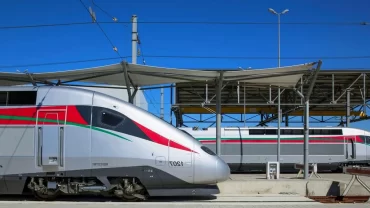
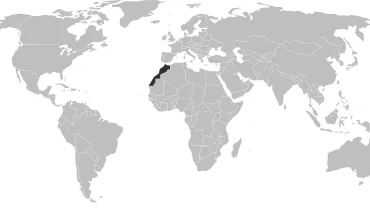
Comment (0)